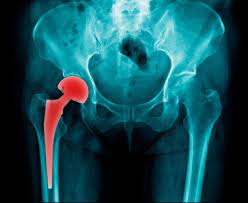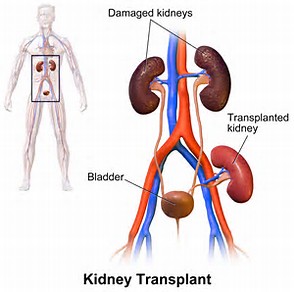Let’s say you’ve read the past two or three blogs and understand that more kidney donations are needed. Let’s say deceased donation is just not hitting you right. Let’s say you want to make a living donation since you have two kidneys and only need one to stay alive. First of all, congratulations on making that big decision. Next, do you know there are organizations that will help you… and it won’t cost you a penny. I’ll let the organizations speak for themselves.

You do need to apply for this first one. Not all applications are guaranteed entry to the program.
The National Living Donor Assistance Center
“Many people would like to donate an organ to a family member or friend, but would have trouble paying for related expenses—like transportation, lodging, food, and dependent care—that are not covered by insurance, especially if they lose wages during their recovery from donation surgery. The costs of the process can be a burden for donors and recipients; for some, these costs might make living organ donation impossible.
The National Living Donor Assistance Center exists to provide access to transplantation for those who want to donate, but face financial barriers to doing so.
This program is administered by the Division of Transplantation (DoT), Healthcare Systems Bureau (HSB), Health Resources and Services Administration (HRSA), United States Health and Human Services (HHS) through a cooperative agreement with the University of Kansas (KU) and the American Society of Transplant Surgeons (ASTS). For details about the legislation that authorizes this program and its history, please click here.”
UNOS (United Network for Organ Sharing) offers information that clarifies some of the questions you may have, in addition to assistance in donating.
“With living donation, a living person donates an organ or part of an organ for transplantation. Most living donors donate one of their kidneys or a part of their liver. Much more rarely, living donors may donate other organs. Living organ donors make thousands of transplants possible every year.
Relatives, loved ones, friends and even individuals who wish to remain anonymous often serve as living donors to spare a patient a long and uncertain wait. In 2023, more than 6,900 transplants were made possible by living donors.

If you are considering living donation, it is critical to gather as much information as you can from various sources.
View downloadable brochures for more detailed information
Who can be a living donor?
Living donors should be:
- in good overall physical and mental health and
- older than 18 years of age.
Medical conditions such as uncontrolled high blood pressure, diabetes, cancer, certain infections, or an uncontrolled psychiatric condition, could prevent you from being a living donor.
Since some donor health conditions could harm a transplant recipient, it is important that you share all information about your physical and mental health. You must be fully informed of the known risks involved with donating and complete a full medical and psychosocial evaluation. Your decision to donate should be completely voluntary and free of pressure or guilt.
Visit the UNOS patient website, Transplant Living, to learn more about living donation.”
The National Kidney Registry outlines the approximate time necessary to donate a kidney.
“Donating a kidney is a life-changing gift but also a major commitment that involves extensive testing, major surgery and weeks of recovery time. If you decide to donate a kidney, here’s the process you’ll go through.
Screening & Testing
- 45 mins Complete a confidential screening / medical history
- ~3 days Center will contact you
- ~3 days Complete standard workup
- 1 – 4 months Get cleared for donation
Surgery & Recovery
- 1 day Complete pre-op
- 1 – 5 hours Complete surgery
- 1 – 4 days Recover in hospital
- 1 week Refrain from flying
- 1 – 4 weeks Recover at home*
*Most people can return to normal activities after 2 – 4 weeks. Donors with physically demanding jobs may need 4 – 6 weeks of recovery before returning to work. High-performance athletes will need 6 months to a year before they are back to pre-donation performance levels.”
How could I not check the American Kidney Fund for more information?
“If you are interested in living kidney donation:
- Contact the transplant center where a transplant candidate is registered.
- You will need to have an evaluation at the transplant center to make sure that you are a good match for the person you want to donate to and that you are healthy enough to donate.
- If you are a match, healthy and willing to donate, you and the recipient can schedule the transplant at a time that works for both of you.
- If you are not a match for the intended recipient, but still want to donate your kidney so that the recipient you know can receive a kidney that is a match, paired kidney exchange may be an option for you.

Another way to donate a kidney while you are alive is to give a kidney to someone you do not necessarily know. This is called living non-directed donation. If you are interested in donating a kidney to someone you do not know, the transplant center might ask you to donate a kidney when you are a match for someone who is waiting for a kidney in your area, or as part of kidney paired donation. You will never be forced to donate.”
Hey, how do you find the transplant centers anyway? The National Kidney Foundation offers easy to follow directions.
“To find a transplant center in your area visit the Organ Procurement and Transplantation Network (OPTN) website. Then follow these steps:
- Select ‘Transplant Centers by Organ’ under Member Type
- Select ‘Kidney’ for Organ Type
- Select your state or region”
I tried it… just to check, of course. I entered my state rather than region and found four kidney transplant centers in Arizona. Well, that was easy.

Today’s blog was only a sampling of the places that can help you with your living kidney donation. I hope it was enough to peak your interest.
Until next week,
Keep living your life!



























